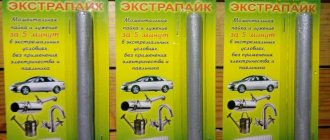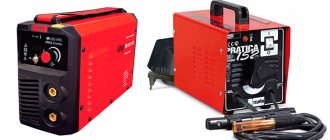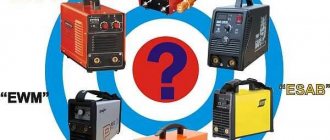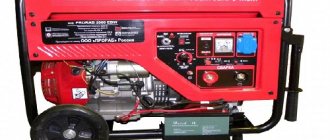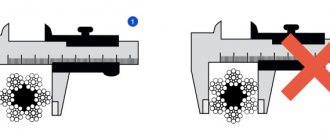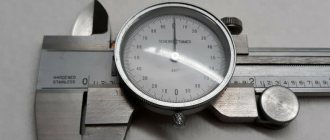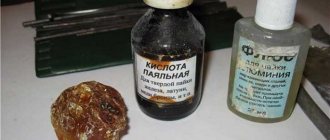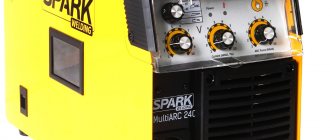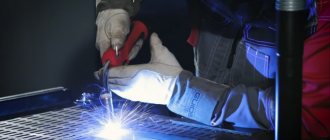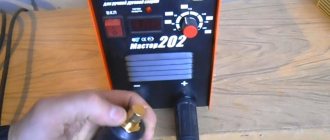Pulse welding - what is it? In essence, this is ordinary electric arc welding, during which additional short-term pulses are applied. Please do not confuse this type of welding with spot welding. Pulsed spot welding and pulsed arc welding are two radically different methods of joining metals.
But what if you want to try this method of joining metals in your practice, but do not want to spend a lot of money on buying a high-quality welding machine? There is a solution! You can make homemade pulse welding. Pulse welding can be assembled on your own in one and a half to two hours, and all components are inexpensive. In this article we will tell you in detail how to make pulse welding with your own hands and what is our experience in using a homemade welding machine.
Pulse Welding Assembly
Converter
Let's start by assembling the converter. Which is also called the power part of the welding machine. Below you can see a detailed assembly diagram.
We have also provided several tables with specifications of the components used.
Control circuit
Below is a clear and working control diagram, and a small part of the device’s startup diagram is also visible.
As when assembling the converter, we have provided several tables with the specifications of the components used.
Pay
Below you can see a schematic image of the printed circuit board.
And here is the layout of all the elements on the board.
Please note that the “soft start” is located on the control board.
Complete device
Below you can see the assembled device. This is its simplest form. What is missing is a housing with fans, a control board (it needs to be attached to the housing itself), a connector for welding current, as well as a surge protector and a circuit breaker (also attached to the housing).
NY-YHD02 precision, double pulse, welding photocontroller, instead of imitation
There are small welding marks on the circuit board, which will not affect the use of the product. Please don't buy if you are not satisfied with it.
Supply voltage link
https://www.aliexpress.com/store/product/50pcs-lot-1300-16-audio-EI14-transformer-VOIP-telephone-transformers/2956052_32807729529.html?spm=2114.12010615.0.0.CM5hoH
NY-YHD02It is our storeNY-YHD0The update of 21 controllers, the performance is relatively tight. We still sell at low prices and give back to our customers.
Douleveinpunchingargon arc welding spot welding control instead of simulator is spot welding for argon arc welding , Simulation and development of cold welding specification , Multiple welding shapes , Double pulseSimpletimeController , Directly installed on the original argon arc welding machine , Does not affect the original function of the welding machine , Simple wiring , The operation is very convenient . According to the thin platform . Using a very small input signal will make your ordinary argon arc welding machine have a professional cold welding effect . Precision welding of workpieces can be easily realized .
Main features of the controller:
1: Adoption output exclusive double rotation relay output , greatly enlarged
Controller service life increases
2: Isolated power supply , improved inputoutputanti-interference power supplymeter design
3: Using an industrial microcontroller , controlling pulse time with millisecond accuracy
Level , Dual pulse output , Any set of time 0, Can be considered as
Using one pulse
4: Multi Specification , Most Sets 15 Group Parameters
5:5 Windows data display , Standard number display respectively , I, II Pulse width sum I, II
Pulse interval
6: The control mode has single spot welding , continuous welding , original welding machine
7: Parameters are adjusted to key and sensor input mode , more accurate and convenient
8 : Pulse Width 1-999, Pulse Interval 1-999, Ms
9: Multi-indicator lamp , Let you monitor the operating status at a glance , The color has a special design , Even if it is far away , You can also determine the operating status of the controller
Physical wiring diagram, intuitive and clear
Detailed map for kids
Instructions
This controller has 3 View Control Model
Single point welding: Just weld every time
Continuous welding: As long as the start switch is closed, output continuous pulses
Original welding machine: Functional welding with original argon arc welding
Exercisedo:
Press[Set Top/Check Out]Key,HoweverAfter pass[I]And[To]Press
Key, Control model selection, Node operation mode,
After selecting, click again [Set Top/Check Out] Key, You can save itModel
Type A.
2:Normative choice
The controller can be saved 15 specification welding bar
The standard handset number displays the current characteristics, Simultaneous Pulse Width, Pulse
The interval displays the parameter values of the current specification
Exercisedo:
Press[Set Top/Check Out]Key,HoweverAfter pass[I]And[To]Press
Key,Select choice dgaugefan.,Then turn the knob onSureChoicegaugeFan.,Select
After completed, click again [Set Top/Check Out] Key, You can save itgaugeFan.
IN.
3: Pulse width interval
Pulse width refers to the time of the output pulse, Pulse interval is the interval between pulses
Time.
Exercisedo:
Press the [Set Top/Sign Out]Key,HoweverAfter pass[I]and [To]Presskey,Select the width and spacing to set,You can enable the knobtransferPitch option,Transfer after completion,Press again the[Set Top/Sign Out]Key,You can save itginsennumumber.
Application experience
Our experience has shown that a device assembled according to these circuits works almost flawlessly. We were pleased with the functionality and quality of the resulting seams. Of course, with the help of such a unit you will not be able to perform professional welding work, but it is not necessary. This homemade welder is suitable for pulse welding of a fence or greenhouse. In a word, it will not let any home craftsman down, and its assembly will be very cheap.
The welder assembled according to these diagrams is designed to work on a 220V network. But in our memory there have been situations when the voltage was unstable, especially in the country. Nevertheless, the arc burned stably and was ignited quite simply. Yes, this is not professional micropulse welding, but still. By the way, we recommend using only consumable electrodes when working with such a homemade device. Welding with a consumable electrode is much more effective and stabilizes the arc quite well.
Naturally, we needed to spend our own time and effort to assemble it. But the final cost of a homemade pulse welding machine turned out to be several times lower than that of budget models from the store. At the same time, the homemade device copes with its functions perfectly.
Micropulse welding
To work with dental titanium alloys in dental prosthetics, micro-arc welding devices have been developed that make it possible to connect thin-sheet elements no worse than lasers. Micropulse welding forms a high-quality butt joint that does not require additional surface treatment.
The compact device is very convenient and inexpensive. Purchased by small dental laboratories and large orthopedic centers. A closed body, a convenient needle tip with LED illumination - this device is used by dental technicians who do not have welding experience.
Advantages of a homemade device
In addition to the price, a homemade pulse welding machine has many other advantages over models sold in stores. The first advantage is low current consumption. If you plug an ordinary device from a store into a household outlet at your dacha and weld a gate, for example, you will soon receive electricity bills and be unpleasantly surprised. In addition, connecting such a device to a household outlet is simply dangerous; the machines may not withstand such power.
Don’t forget about the dimensions of purchased devices. It is simply impossible to calmly carry them in your hands from place to place. In factories, welders simply use very long wires so as not to move such a device around the workshop. However, the price for such wires is very high, and we don't think you'll want to spend an extra $100 on cables. But the homemade device weighs little and can be easily moved.
Also, purchased devices have their own production capabilities, and they rarely exceed 80%. And often they are at around 50%. This means that such a device simply cannot reveal its full potential. This happens because a large and technically complex welder gets very hot and takes a long time to cool down. For this reason, you will also not be able to cook for more than 2-3 minutes at a time.
A homemade welder assembled according to our diagrams does not have such disadvantages. There are no reactive currents in it, so almost all electrical energy is used. You can easily connect such a welder to a home outlet and not worry about electricity bills and possible operating time. After all, the power of our homemade device is only slightly greater than the power of a regular iron.
Using a homemade pulse welding machine, you can cook for more than 20 minutes, which is definitely longer than the allotted 2-3 minutes for the machine in their store. And the weight of such a homemade device does not exceed 10 kilograms. This is what the home handyman needs.
What other advantages are there? Well, you can reduce the cost of the design even more at the assembly stage. For example, to use wires with a smaller cross-section as welding cables, 12 square millimeters is enough. And to power the device, you can use wires from household extension cords.
Semi-automatic pulsed MIG/MAG welding: what is it and how does it work?
Technologies for plastically joining metal elements are constantly evolving. New methods and methods for thermally bonding materials are emerging. Pulse welding is used for the installation of supporting structures, when laying pipelines, in industrial and civil construction at all stages of construction. Semiautomatic machines are used in production and at home, in large enterprises and small workshops.
What is MIG welding?
This is a method of non-contact transfer of filler metal into a joint to produce a uniform joint. The welding wire, heated by the electric arc, melts, and the metal flows drop by drop into the melt pool. Thanks to the high-frequency characteristic of the welding current, the heat input can be varied with minimal spatter. This is the main difference between the technology and the jet and large-droplet transfer of additives characteristic of other types of welding.
With pulsed power supply, the drop is pushed into the working area due to frequent changes in arc density.
From a physical point of view, pulsed welding technology is a multi-stage process. When power is supplied, an electric arc occurs and flares up due to the potential difference. The rod begins to heat up and a small drop forms. When it is separated from the tip of the wire, it moves to the surface of the workpiece being welded. After penetration, the diffusion layer crystallizes. When moving the semi-automatic device, cyclic repetition of operations occurs. A uniform seam bead is formed at the joint.
Advantages of semi-automatic machines
Filler wire feed machines are often equipped with semiconductor converters to provide pulsed power. The functionality of such power supplies is much higher than that of generators and rectifiers. When you need a perfect weld seam, a sealed, reliable connection, it is better to choose inverters with a high-frequency AC conversion function.
Although the cost of semi-automatic MIG/MAG welders is higher than that of other welders, the one-time investment quickly pays off by reducing the cost of the process of obtaining permanent connections. A few words should be said about the advantages of such equipment.
- Saving on consumables. MIG welders are more universal; when using a filler rod of a certain diameter, by adjusting the rotation speed of the rollers, they form rollers of the required thickness. There is no need to constantly change coils to perform different tasks. A rod with a thickness of 1.1 mm can replace wire with a diameter of 0.9 mm and 1.3 mm. In other words, you won’t have to waste time replacing consumables. As a result, non-productive costs are significantly reduced and labor productivity increases. The cost item for the purchase, storage and transportation of auxiliary materials is sequestered. Instead of two or three different coils, the welder only needs one.
- Small spatter area, low smoke generation when welding non-ferrous metals. MIG semi-automatic machines are often used for the manufacture of products from alloyed metals and non-ferrous materials. Non-ferrous metals burn out when heated. When the heating time interval in the process of joining workpieces is reduced, the metal does not have time to deform, and smoking is limited. Compared to traditional welding equipment, pulse modifications have the advantage of low spatter. Due to the specific shape of the arc, wetting is ensured when a drop falls. Metal losses are minimized and the additive is used more efficiently. Workwear burns out less, there is no need to fence off the work area, and the risk of fire from accidental sparks is reduced. It is easier for the welder to control the welding area. Another plus is that the seams do not need to be thoroughly cleaned; abrasives and steel brushes are not wasted on cleaning the surface.
- Controlled heat input. This property is relevant when working with thin sheet materials, long and shaped products. Pulse welding is characterized by low heating. In the thermally affected zone, semi-finished products do not have time to deform, the tendency of finished products to crack is reduced, and the percentage of defects is lower. Semi-automatic machines are optimal equipment for stainless steel, nickel, copper and aluminum alloys, duralumin, which are characterized by high sensitivity to thermal effects.
Comparison of pulse welding with other methods
Unlike other technologies, MIG welding is not characterized by cold welds. The method is much more effective and economical than large-droplet or jet methods. When transferring metal through short circuits, the melt splashes heavily. Although the workpieces do not have time to warm up strongly, the seams are leaky and uneven.
When transferring large droplets, it is difficult to control the thickness of the formed roller; consumables quickly run out. Coils often have to be changed. When welding thick-walled semi-finished products, large drops are more convenient and fill the melt pool faster. But when they fall, they are able to stretch out and “stick,” causing the arc to burn out. Another disadvantage is that a large heat input is required to melt the additive. Although, in terms of the speed of seam formation, the large-drop method is ahead of the pulse method. From an economic and aesthetic point of view, the second method is preferable.
Jet transfer is characterized by a rigid current-voltage characteristic. Despite the productivity of surfacing and greater penetration depth, the pulse technology is more functional in terms of the number of available spatial positions. In addition, during jet transfer, due to the high heat input, there is a high probability of burns.
Connecting and setting up the device
When generating a pulse, a reliable ground connection is necessary. For connection, it is better to purchase a double-insulated power cable. The optimal length is up to 15 meters. With less, the inductance increases. It is forbidden to wind pieces of wire around conductive elements; as the induction increases, the pulses are smoothed out.
Much attention is paid to customization. The quality of the final product depends on this. It is important to ensure that all pieces of equipment are connected correctly. By adjusting the shape of the pulse wave, an aesthetic connection is achieved.
- The current is minimal, but sufficient to maintain the arc;
- The current increases;
- The current strength is maximum, the oxide film is destroyed, the drop comes off the electrode;
- The current strength drops. The weld pool cools down.
Waveform Settings
There are only four wave formats:
- the classic sinusoid forms a soft, wide, moderately noisy electric arc with shallow penetration of a large area;
- the rectangular curve ensures stable combustion and is characterized by deep penetration even with fast penetration;
- rounded rectangular allows you to control the size of the melt pools, forms a smooth, slightly flat arc, relevant when working with thin-walled semi-finished products;
- triangular - the most effective, reduces the degree of deformation of the weld due to minimal heating at the electric current peak load.
The waveform is adjusted according to the instructions included with each semi-automatic machine. Some models have the ability to adjust the curve. You can individually adjust the ampere characteristics, based on the characteristics of the filler rod and specific conditions.
A semiconductor power source is capable of generating a wave of a given geometry. You can also adjust the dynamics of changes in wave height and width. This approach improves the quality of seam beads and makes it possible to obtain homogeneous joints without deformation of the heat-affected zone. The droplet formation process is also optimized; as the wave decreases, it is possible to achieve optimal wetting when transferring metal.
Devices with an output curve control function are equipped with sets of preset settings. The welder has the ability to control the rate of increase or decrease of the electric wave, the duration of the peak, achieving the desired wave geometry.
Other recommendations
Difficulties arise when thermally joining thin-walled metal products with direct current of reverse polarity. In this case, the electrode is connected to the positive terminal, the minus is connected to ground. Changing the poles allows you to shift the area of maximum heating to the tip of the wire, it melts faster, and droplet formation increases. The parts being connected warm up much more slowly.
The pulse mode setting is limited in any case. Completely depends on the capabilities of the welder. Modern inverter models provide for synergy - the interdependence of the main parameters and their mutual influence on each other. All current characteristics parameters are selected automatically when the amperage or voltage changes. Professionals prefer to use manual settings. During the work, depending on the type of metal being welded and the format of semi-finished products, experienced welders regulate:
- The frequency or dynamic change of the pulse achieves the transfer of the optimal number of melt drops per unit time. By increasing the frequency, the frequency of drop formation and welding speed increase. The seam rollers are voluminous.
- Arc height. By changing the distance from the tip of the filler wire to the melt pool, metal transfer is optimized according to the speed regime. With high-frequency pulse technology, the arc length increases, and with a decrease in frequency, it decreases.
Correct setting allows you to achieve high-quality connection of parts and eliminate lack of penetration and other defects. You can get a beautiful seam shape.
Advantages of the pulse mode when welding aluminum
The use of MIG technology reduces the heating of workpieces and significantly reduces the risk of warping of the welded structure. With certain skills, you can weld thin rolled products without burns and obtain finely flaky seams. The finished products will have a good presentation.
Pulse-based technology avoids suture bead defects. When the feed speed of the wire additive is slowed down, the electric arc is quickly ignited. With stable combustion, the speed limit can be normalized.
After crystallization of the melt pool, no final crater is formed. By reducing the operating current values, it is possible to smooth out the shrinkage cavities; they are filled with liquid metal until solidification, without shrinkage.
The main problem when welding aluminum remains the high porosity of the joint. They reduce the strength of seams for bending and torsion, and there is a high probability of depressurization when welding round and profiled pipes. When a pulsed current is applied, the molten metal is constantly mixed, gas vapors are removed, and the connection becomes homogeneous. By changing the frequency and amplitude, you can control the penetration depth. This is especially true when welding thin workpieces.
Equipment selection
Manufacturers offer professional and household equipment for pulsed MIG welding. You can find devices operating on single-phase 220 V and three-phase voltage 380 V, with a welding current power of up to 400 A.
All inverters have a similar operating principle, they differ in current-voltage characteristics, and there are modifications with hard and soft current-voltage characteristics.
For beginners, inverters with synergetic control are preferable. When the welder changes the additive supply speed, the control unit automatically adjusts the waveform and frequency of the working electric current. The electronics eliminate the need for manual adjustments, adjust to the speed of additive release, and immediately respond to changes in the angle of inclination of the burner nozzle. When there is no experience, this model allows you to achieve good results.
Some modifications of modern semi-automatic machines for MIG welding operate in several modes:
- “Pulse” with classic wave settings;
- “Double pulse” with control of metal transfer, the ability to adjust the main parameters of the second pulse. You can change the frequency indicator of the device, set the required value of the lower amperage of the base electric current.
When welding thick-walled workpieces made of non-ferrous and ferrous metals, the semi-automatic MIG/MAG torch gets very hot. For large volumes of work, models with liquid cooling or a large nozzle are recommended to allow for air exchange.
You can find semi-automatic heads with the function of quickly switching wire ejection speeds. The range of application of the device is expanding. It is important to make sure that the consumable is compatible with the inverter model.
Arc force, anti-sticking and hot start are available on almost all inverters. When working at a long distance from the power source, it is advisable to control the operating voltage. The parameter between the output connectors is determined. AC-Waveform is a function for selecting the waveform of alternating current. Manufacturers are usually limited to a maximum of 2 waveforms, but to accurately connect small semi-finished products, it is important to vary the shape of the output curve.
When purchasing welding equipment for auto body repair shops and small workshops, operating conditions, switching dynamics, and intensity of operation must be taken into account. What matters is the thickness of the workpiece and the chemical composition of the alloy being processed.
Peculiarities
Do-it-yourself welding using a homemade welder has a number of features. We will talk about them below.
During work, the arc may burn unstably. To fix this you need to use a transformer with a high degree of inductance. But keep in mind that in this case the current value may decrease. This is, of course, a minus. After all, such welding machines often operate with alternating current and, by default, have a small current adjustment range, and at the same time a low efficiency.
But for devices operating on direct current, the current itself is stabilized thanks to a separate choke. Some models may have two throttles at once. Therefore, the arc recovery time is significantly reduced, and the value of the welding current increases.
The conclusion is obvious: the welder needs to operate on direct current. But keep in mind that you need to monitor the inductance of the inductor. If it is too large, then you will not be able to light the arc normally and the electrode will simply begin to stick to the metal. Is it possible to achieve fast arc ignition and stable welding current? Certainly. But to do this, you need to make sure that the inductance of the inductor is low, while the current frequency is high.
